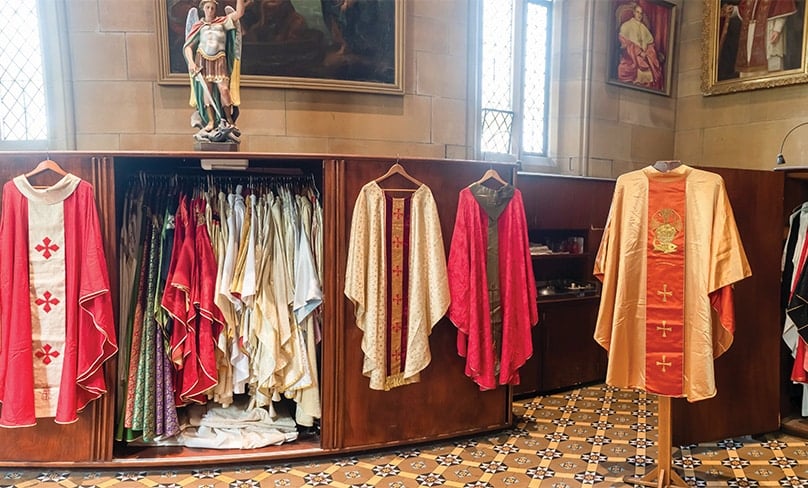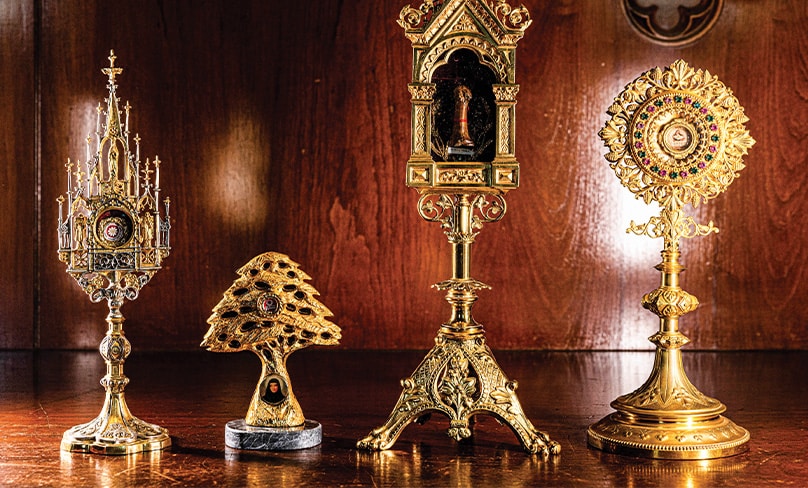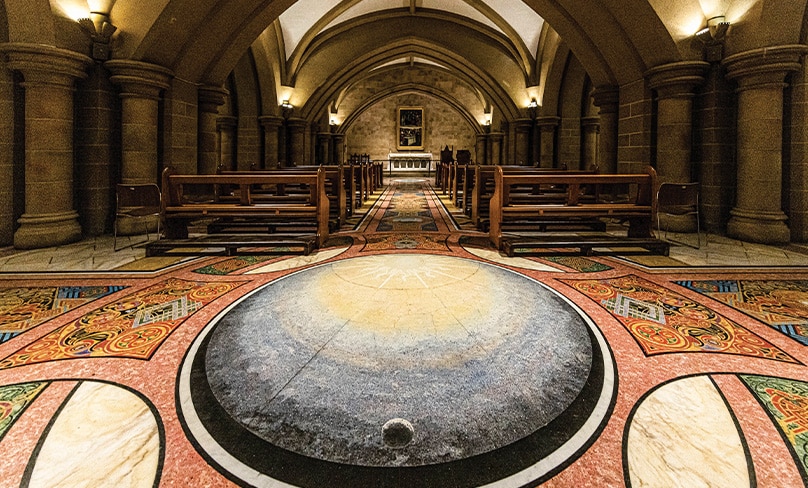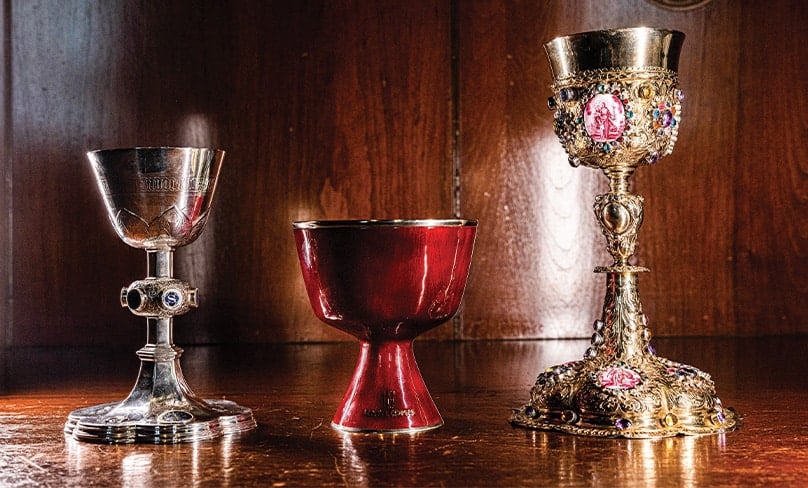
Today’s cathedral is visited by more than a million people annually, but is filled with fascinating aspects few ever get to know about
While it may have stood in the middle of Sydney’s CBD for 200 years, St Mary’s Cathedral is steeped in thousands of years of mystery.
From gothic-lettered prayers carved in sandstone, stained glass windows rich in symbolism and stories told through colourful mosaic floors, the cathedral is full of secrets most visitors wouldn’t know exist.
And kept in vaults away from prying eyes, priceless relics, jewel-encrusted liturgical artefacts and vestments worn by popes and saints from around the world are kept under lock and key.
The Catholic Weekly was given exclusive access to some of the hidden gems from centuries gone by as part of the bicentenary anniversary celebrations.
While guarded on much of the detail, the Dean of the Cathedral, Fr Don Richardson, shed a little light on some of its secrets.
“There’s no point in having secrets if everybody knows about them,” he grinned.
“But as it’s such a special occasion I’ll show you a little of what we’ve got.”

Prayers carved in stone
If you’re looking for some divine inspiration look towards the heavens.
Many people don’t know that there are prayers literally etched in the honey-coloured sandstone on the outside walls of the cathedral.
Hand-carved in the late 19th Century in ornate Latin lettering above the windows of the northern half of the building, the prayers are mainly related to the Blessed Virgin Mary, in whose honour and under whose patronage the cathedral is titled.
The beginning and ending words of the Hail Mary appear, but the walls where the words in between should appear had not been built at that time and when construction started in the 20th Century the decorative friezes remained incomplete.
“Some of the more significant relics include a small quantity of St John Paul II’s blood … and fragments of bone from St Charles Borromeo and St Oliver Plunkett.”
Priceless relics
More than a hundred relics from around the world are safely kept within the cathedral’s walls. While unable to be bought (relics cannot be sold) they are considered priceless to Catholics around the world.
Some of the more significant relics include a small quantity of St John Paul II’s blood, some of St Thérèse of Lisieux’s hair, and fragments of bone from St Charles Borromeo and St Oliver Plunkett. While not considered relics, a fragment of wood from the crib at the stable in Bethlehem and hair from the first Archbishop of Sydney, Bede Polding, are also considered significant.
One of the newer additions is a relic from the right hand of St Francis Xavier, currently on display to the public.

Cathedral treasures
An ‘Aladdin’s Cave’ of liturgical treasures representing the whole tradition of the universal Church and housed at the cathedral draw on not only the past but look towards the future.
Each has its significance and value, reflecting different artistic taste and times including the gothic revival, baroque and 20th century modern styles.
There’s also an enormous collection of chalices, one belonging to Fr John Therry and others that date back to the 17th century in Ireland, through to the sacred vessels made for the Papal Mass at World Youth Day in 2008.
Of particular significance are chalices used by Archbishop Bede Polding, Saint Paul VI, Saint John Paul II and Pope Benedict XVI.
One of the most impressive is a stunning gem-encrusted chalice given to Archbishop Polding in 1842 by the Roman princess d’Oria Pamphili, still used today at Christmas and Easter.
“Made in Italy, Poland, France, Spain, Macau, the US, Canada, Peru and Australia, [these vestments] are of gothic, semi-gothic, monastic and classical Roman styles.”
Vestments
A remarkable collection of several hundred colourful vestments made from the 19th through to the 21st centuries hang in the sacristy and are still used by both cathedral and visiting clergy.
Made in Italy, Poland, France, Spain, Macau, the US, Canada, Peru and Australia, they are of gothic, semi-gothic, monastic and classical Roman styles.
Made of gold and silver cloth, silk, wool blend and synthetic materials, they have been worn by both saints Paul VI and John Paul II.

The Crypt mosaic floor
Considered by many as the jewel in the crown, the Crypt is remarkable for the beauty of its terrazzo mosaic floor, considered one of the finest of its kind in the world.
First and foremost a sanctuary, it is the resting place of some of Australia’s most important Catholic leaders.
What is unknown by the thousands of cathedral visitors is the intricate mosaic floor inlaid with a Celtic Cross and medallions which depicts the days of Creation inspired by the 9th Century Book of Kells, an illuminated manuscript of the Gospels.
Depicted in five large circles, the seven days of creation include Light from Dark, Sun and the Moon, Man and Woman, the Birds and the Fish and Water and Land.
A series of 18 smaller medallions illustrate traditional titles given to Mary, to whom the cathedral is dedicated.
“Depicted in five large circles, the seven days of creation include Light from Dark, Sun and the Moon, Man and Woman, the Birds and the Fish and Water and Land.”
Crosses on the spires
The crosses on top of the two cathedral spires are made of the same metal alloy as the Australian one and two dollar coins, and are over two meters tall.
Lifted into place by helicopter in June 2000, they completed the cathedral’s construction and have become a landmark in Sydney.
